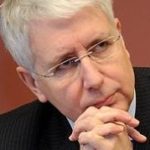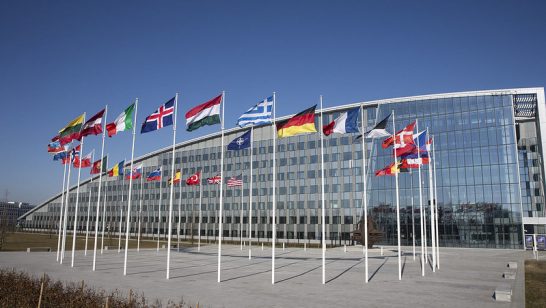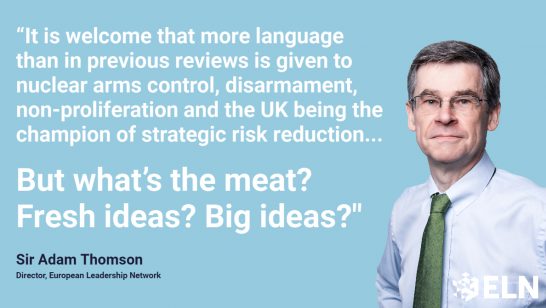
Ahead of the 2021 NATO Summit, five members of the European Leadership Network’s senior network share their views and analysis on how NATO should interpret and respond to April’s crisis on the Ukrainian border.
***
Lieutenant General (retd.) Heinrich Brauss, former NATO Assistant Secretary-General for Defence Policy and Planning, Germany.
The recent Russian military build-up of more than 100,000 troops along the eastern and southern Ukrainian border was a deliberate and escalatory act in Moscow’s campaign of intimidation toward Ukraine. It was also a demonstration of Russia’s military power to the West.
Moscow confirmed its capability to move large forces over great distances at pace, thereby attaining a range of military options at various scales –establishing a threatening posture to an incursion into the Donbas region or large-scale attack to cut Ukraine off the Black Sea, for example. While forces have been withdrawn, significant parts remain in the Voronezh region and Crimea, meaning the Kremlin has retained its leverage vis-à-vis Kyiv.
Significantly, Russia has also demonstrated that neither Ukraine nor the US or NATO had any military options to deter it from its course of action. It has shown it is prepared to use military force against neighbours to attain geopolitical objectives. Should Russia deploy additional troops to Belarus – something we cannot exclude in light of recent developments – an entire regional balance of forces would fundamentally alter.
NATO should increase its efforts to implement its strengthened deterrence and defence posture in full. It should enhance naval presence and air patrol in the Black Sea alongside support for capability development and capacity-building in Ukraine. And Allies should seriously consider Kyiv’s legitimate request for armament supply to strengthen its defence and thus deterrence capacity.
***
Lieutenant General (retd.) Dr Evgeny Buzhinskiy, former Head of International Treaties, Ministry of Defense of the Russian Federation, Russia
In April, the so-called “dangerous concentration of Russian forces on the Ukrainian border” became quite an issue in the West. At the same time, nobody in the West paid attention to the massive redeployment of Ukrainian heavy weapons and troops (described as normal rotation) to the line of disengagement, which started in January, alongside the aggressive rhetoric of Ukrainian officials, including President Zelenskiy.
The Russian MOD explained that April is the last month of the winter training period when final checks of combat readiness and exercises are conducted, but this was ignored by NATO and EU officials. 40,000 troops in the vicinity of Voronezh is not so large a figure; definitely not enough to conduct large-scale offensive operations against Ukrainian Armed Forces. In 2020, at approximately the same time and location, command of Central and Southern military districts concentrated around 150,000 troops, more than 500 aircraft and helicopters, and around 20,000 pieces of heavy equipment. Nobody cared. Of course, there was a different administration in Washington and different levels of western support (at least verbal) for the Ukrainian government.
I cannot exclude that the Russian government wanted to send a signal to President Zelenskiy and its western supports to cool their belligerent rhetoric, and it’s good that the signal was taken seriously. If Ukraine decided to take Lugansk and Donetsk back by force, given the statement made by President Putin that Russia would never leave the people of Donbas, the outcome of such a decision would be disastrous for Kyiv. As for Crimea, any provocation will be considered an act of aggression against the Russian Federation.
***
Dr Irina Ghaplanyan, former Deputy Minister of Environment for the Republic of Armenia and Senior Advisor to the World Bank Group, Armenia
The recent Ukrainian border crisis stood out from previous escalations. Turkey has an increased involvement prior to and during the escalation. Two presidential meetings between Ukraine and Turkey in the space of six months and the sale of Bayraktar TB-2 drones suggest that either NATO has been delegating some of its functions to Turkey or, indeed, Ankara seeks its own role in this explosive regional conflict. Regardless of the motivation, the Turkish involvement, most likely favoured by some but certainly not all NATO members, would be more headache than help for the alliance. Aside from authoritarianism, Turkey has been touting its expansionist vision.
Addressing an audience of young people on May 19, 2021, Turkish President Recep Tayyip Erdogan said: “Turkey is not 780 thousand square kilometres for us; Turkey is everywhere for us,” while justifying military interventions in Eastern Mediterranean, Nagorno -Karabakh (Artsakh), Iraq, Syria, Libya as well as support for Hamas. Ankara’s open military and political support of Azerbaijan in the war against Nagorno-Karabakh (Artsakh) in the fall of 2020, including deployment of Syrian mercenaries to the war zone (a fact corroborated and confirmed by the French and American intelligence), was Turkey’s unprecedented military and political entry into the South Caucasus as well. The question to ask here is whether Turkey is more a NATO member or a neo-imperial expansionist state because it cannot be both, at least not for the sake of the narrative that NATO tries to project to Russia in the Ukrainian conflict.
***
Ambassador Marina Kaljurand, Member of the European Parliament and Former Foreign Minister, Estonia
NATO’s goal is very clear – a Europe that is whole, free, and at peace.
Unfortunately, we are still far from that, and at present, we are even drifting further away.
Russia’s recent behaviour has been provocative, aggressive and unpredictable. NATO-Russian relations are at the lowest since the end of the Cold War, and practical cooperation has been suspended since 2014.
Russia’s military escalation in eastern Ukraine raises concerns and calls for a strong and united response to Russia’s actions that violate international law and breach the values, principles and commitments that underpin NATO-Russian relations.
NATO has always supported Ukraine’s sovereignty and territorial integrity. NATO promotes an “open door policy” and supports every nation’s right to decide upon its future. Ukraine has been very clear about its Euro-Atlantic aspirations and has received support for wide-ranging reforms that are making Ukraine more resilient. In response to the occupation of Crimea and military actions in eastern Ukraine, NATO has reinforced its support for capability development and capacity building in Ukraine. The next step should be NATO MAP (Membership Action Plan)
At Bucharest Summit in 2008, NATO Allies agreed that Ukraine (and Georgia) “will become members of NATO”. Allies also agreed that “MAP (Membership Action Plan) is the next step for Ukraine (and Georgia) on their way to membership”.
Today, 13 years later, it is finally time to deliver. I hope that Allies will have an open and frank discussion at NATO Summit in Brussels and will make the political decision to provide MAP to Ukraine (and Georgia).
***
Ambassador Imants Lieģis, former Minister of Defence, Latvia
The recent unannounced, non – transparent amassing of tens of thousands of troops by Ukraine’s border, together with an increased regional air and naval activity, recalled Russia’s annexation of Crimea and military action in eastern Ukraine in 2014. Along with a disinformation campaign and other hybrid war measures, these actions continue to undermine security and stability in the Euro-Atlantic region. Russia’s disdain for internationally accepted norms and behaviour prevails.
The latest military activities were used to intimidate and threaten Ukraine and test NATO.
The new US Administration, seeking “predictable and stable” relations with Russia, spearheaded a robust, agile Alliance response. A Foreign Ministers’ NATO-Ukraine Commission meeting was held. Visits to Kyiv by Secretary Blinken, three Baltic Foreign Ministers and others offered Ukraine timely strategic support.
NATO should continue its policy of not treating the perpetrator and victim of aggression alike and acknowledge that in defending its own freedom, Ukraine is defending democracy in Europe. The Alliance should uphold and refer to values – commitments to sovereignty and territorial integrity and ongoing insistence that the occupation and annexation of Crimea is illegal.
In preparing the revised Strategic Concept, NATO should factor in relations with Ukraine, including the Bucharest Summit decision about membership. Perhaps a NATO Centre of Excellence for Hybrid Warfare can be opened in Kyiv, and more support given by member states to Ukraine’s defence sector?
At the same time, constant engagement and dialogue with Russia should be pursued whilst recognising the reality of disagreement and Moscow’s unflinching, confrontational approach.
The opinions articulated above represent the views of the author(s), and do not necessarily reflect the position of the European Leadership Network or any of its members. The ELN’s aim is to encourage debates that will help develop Europe’s capacity to address the pressing foreign, defence, and security challenges of our time.







